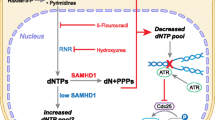Abstract
It has become increasingly evident that among purine nucleotides, guanine based nucleotides specially guanosine-5′-triphosphate (GTP) serve as an important and independent regulatory factors for development and diverse cellular functions such as differentiation, metabolism, proliferation and survival in multiple tissues. In this brief review, it has been provided selective outline related to delicate regulation of signaling pathways by guanosine based nucleotides as intracellular signaling molecules. Although the exact mode of action of theses nucleotides in many biological processes and signaling pathways is still elusive, it has become well clear that intracellular guanosine based nucleotides content rather than adenosine based nucleotides could modulate the intensity and duration of signaling which ultimately impact on cell’s fate. It opens an entirely new perspective for developing new and potential therapeutic strategies to combat diseases like cancer, hypoxia, etc.


Similar content being viewed by others
References
Stagg, J., & Smyth, M. J. (2010). Extracellular adenosine triphosphate and adenosine in cancer. Oncogene, 29, 5346–5358.
Li, G., Segu, V. B., Rabaglia, M. E., Luo, R. H., Kowluru, A., & Metz, S. A. (1998). Prolonged depletion of guanosine triphosphate induces death of insulin-secreting cells by apoptosis. Endocrinology, 139, 3752–3762.
Kokeny, S., Papp, J., Weber, G., Vaszko, T., Camona-Saez, P., & Olah, E. (2009). Ribavirin acts via multiple pathways in inhibition of leukemic cell proliferation. Anticancer Research, 29, 1971–1980.
Nagai, M., Natsumeda, Y., Konno, Y., Hoffman, R., Irino, S., & Weber, G. (1991). Selective up-regulation of type II inosine 5′-monophosphate dehydrogenase messenger RNA expression in human leukemias. Cancer Research, 51, 3886–3890.
Detimary, P., Xiao, C., & Henquin, J. C. (1997). Tight links between adenine and guanine nucleotide pools in mouse pancreatic islets: a study with mycophenolic acid. Biochemical Journal, 324, 467–471.
Dagher, P. C. (2000). Modeling ischemia in vitro: Selective depletion of adenine and guanine nucleotide pools. American Journal of Physiology—Cell Physiology, 279, 1270–1277.
Cohen, M. B., & Sadee, W. (1983). Contributions of the depletions of guanine and adenine nucleotides to the toxicity of purine starvation in the mouse T lymphoma cell line. Cancer Research, 43, 1587–1591.
Messina, E., Gazzaniga, P., Micheli, V., Guaglianone, M. R., Barbato, S., Morrone, S., et al. (2004). Guanine nucleotide depletion triggers cell cycle arrest and apoptosis in human neuroblastoma cell lines. International Journal of Cancer, 108, 812–817.
Rudoni, S., Colombo, S., Coccetti, P., & Martegani, E. (2001). Role of guanine nucleotides in the regulation of the Ras/cAMP pathway in Saccharomyces cerevisiae. Biochimica et Biophysica Acta, 1538, 181–189.
Clarke, S. (1992). Protein isoprenylation and methylation at carboxyl-terminal cysteine residues. Annual Review of Biochemistry, 61, 355–386.
Sibley, D. R., Benovic, J. L., Caron, M. G., & Lefkowitz, R. J. (1987). Regulation of transmembrane signaling by receptor phosphorylation. Cell, 48, 913–922.
Reed, R. R. (1990). G protein diversity and the regulation of signaling pathways. New Biology, 2, 957–960.
Huang, M., Itahana, K., Zhang, Y., & Mitchell, B. S. (2009). Depletion of guanine nucleotides leads to the Mdm2-dependent proteasomal degradation of nucleostemin. Cancer Research, 69, 3004–3012.
Lo, D., Dai, M. S., Sun, X. X., Zeng, S. X., & Lu, H. (2012). Ubiquitin- and MDM2 E3 ligase-independent proteasomal turnover of nucleostemin in response to GTP depletion. The Journal of Biological Chemistry, 23, 10013–10020.
Gu, J. J., Gathy, K., Santiago, L., Chen, E., Huang, M., Graves, L. M., et al. (2003). Induction of apoptosis in IL-3-dependent hematopoietic cell lines by guanine nucleotide depletion. Blood, 101, 4958–4965.
Moosavi, M. A., & Yazdanparast, R. (2008). Distinct MAPK signaling pathways, p21 up-regulation and caspase-mediated p21 cleavage establishes the fate of U937 cells exposed to 3-hydrogenkwadaphnin: Differentiation versus apoptosis. Toxicology and Applied Pharmacology, 230, 86–96.
Laliberté, J., Yee, A., & Xiong, Y. (1998). Effects of guanine nucleotide depletion on cell cycle progression in human T lymphocytes. Blood, 91, 2896–2904.
Sherley, J. L. (1991). Guanine nucleotide biosynthesis is regulated by the cellular p53 concentration. The Journal of Biological Chemistry, 266, 24815–24828.
Kelly, K. J., Plotkin, Z., Vulgamott, S. L., & Dagher, P. C. (2003). P53 mediates the apoptotic response to GTP depletion after renal ischemia-reperfusion: Protective role of a p53 inhibitor. American Society of Nephrology, 14, 128–138.
Huo, J., Luo, R. H., Metz, S. A., & Li, G. (2002). Activation of caspase-2 mediates the apoptosis induced by GTP-depletion in insulin-secreting (HIT-T15) cells. Endocrinology, 143, 1695–1704.
Floryk, D., & Thompson, T. C. (2008). Antiproliferative effects of AVN944, a novel inosine 5-monophosphate dehydrogenase inhibitor, in prostate cancer cells. International Journal of Cancer, 123, 2294–2302.
Vozza, A., Blanco, E., Palmieri, L., & Palmieri, F. (2004). Identification of the mitochondrial GTP/GDP transporter in Saccharomyces cerevisiae. The Journal of Biological Chemistry, 279, 20850–20857.
Napier, I., Ponka, P., & Richardson, D. R. (2005). Iron trafficking in the mitochondrion: Novel pathways revealed by disease. Blood, 105, 1868–1874.
Parkinson, M. H., Boesch, S., Nachbauer, W., Mariotti, C., & Giunti, P. (2013). Clinical features of Friedreich’s ataxia: Classical and atypical phenotypes. Journal of Neurochemistry, 126, 103–117.
Meshkini, A., & Yazdanparast, R. (2007). Induction of megakaryocytic differentiation in chronic myelogenous Leukemia cells K562 by 3-hydrogenkwadaphnin. Journal of Biochemistry and Molecular Biology, 40, 944–951.
Knight, R. D., Mangum, J., Lucas, D. L., Cooney, D. A., Khan, E. C., & Wright, D. G. (1987). Inosine monophosphate dehydrogenase and myeloid cell maturation. Blood, 69, 634–639.
Meshkini, A., Yazdanparast, R., & Nouri, K. (2011). Intracellular GTP level determines cell’s fate toward differentiation and apoptosis. Toxicology and Applied Pharmacology, 253, 188–196.
Hedstrom, L. (2009). IMP dehydrogenase: Structure, mechanism and inhibition. Chemical Reviews, 109, 2903–2928.
Acknowledgment
This research financially was supported by the Ferdowsi University of Mashhad (Mashhad, Iran).
Author information
Authors and Affiliations
Corresponding author
Rights and permissions
About this article
Cite this article
Meshkini, A. Fine-Tuning of the Cellular Signaling Pathways by Intracellular GTP Levels. Cell Biochem Biophys 70, 27–32 (2014). https://doi.org/10.1007/s12013-014-9897-4
Published:
Issue Date:
DOI: https://doi.org/10.1007/s12013-014-9897-4




